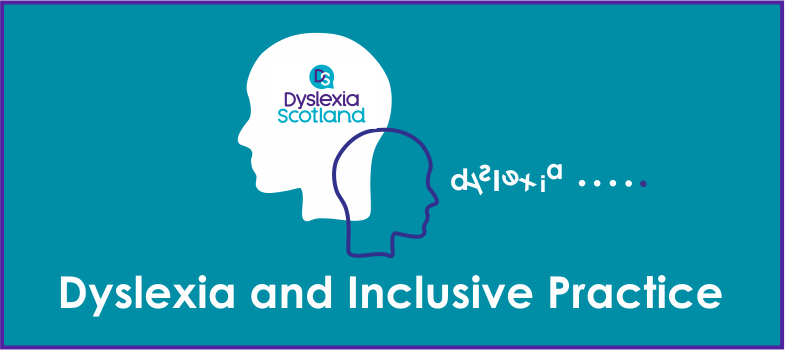1.3.1 What is Dyslexia Friendly Practice?
Dyslexia Friendly Practice is an important element of inclusive practice including approaches to learning and teaching which are child centred and also support inclusive practice for all learners. A number of contributory factors are supporting the development, recognition and implementation of inclusive practice within Scottish education with the aim of improving the educational experiences and outcomes of learners who are dyslexic.
- Current education policies and legislation which support inclusion and equality legislation
- Professional duties e.g. General Teaching Council for Scotland
- Self-evaluation frameworks to support improvement
- Acceptance that dyslexia exists and the neurological, genetic and environmental factors which impact on dyslexia
- Availability of a free national online resource, the Addressing Dyslexia Toolkit which supports inclusive practice
- Improved understanding of an “holistic/collaborative” assessment for dyslexia
- The 2014 ‘Making Sense Review’ recommendations – Improving outcomes for dyslexic learners
- Improving understanding of links between effective support for dyslexia and inclusive practice for all learners.
It is the responsibility of schools and their partners to bring the experiences and outcomes together and apply these entitlements to produce programmes for learning across a broad and inclusive curriculum.
Every child and young person is entitled to expect their education to provide them with:
- A curriculum which is coherent from 3 to 18
- A broad general education, including well planned experiences and outcomes across all the curriculum areas from early years through to S3
- A senior phase of education after S3 which provides opportunities to obtain qualifications as well as to continue to develop the four capacities
- Opportunities to develop skills for learning, skills for life and skills for work (including career planning skills) with a continuous focus on literacy, numeracy and health and wellbeing
- Personal support to enable them to gain as much as possible from the opportunities which Curriculum for Excellence can provide
- Support in moving into positive and sustained destinations beyond school.
Activity 8 Reflective practice task
1. In your reflective log consider:
- What does inclusive practice mean for you?
- What does this mean for your learners?
- What have I done to make my teaching practice inclusive?
2. Complete the following table to establish the current practice in your class or department and identify if any actions can be taken to support improvements. (A copy of this table is in your reflective log)
| Key features of Dyslexia Friendly schools | In my class/department this means | Actions |
| Effective leadership and management | ||
| Multi-sensory teaching approaches | ||
| Effective early identification | ||
| Effective transition support | ||
| Learner engagement | ||
| Parental engagement | ||
| Learning and teaching resources which can be accessed by dyslexia learners |
Inclusive practice is about meeting the needs of all learners, putting the learner at the centre of the curriculum and ensuring that barriers are removed to enable them to:
- Participate and learn to the best of their ability.
- Gain as much as possible from the opportunities which Curriculum for Excellence can provide
- Move into a positive and sustained destination.
Activity 9
Consider the aims of inclusive practice above and what you feel they can/should look like in practice
Note down your thoughts within your reflective log. Click ‘reveal’ to see an example of each.
- Participate and learn to the best of their ability.
Consider what can this look like?
Discussion
An example could be that learners are engaging in learning activities and experiences which match their cognitive ability and provide challenge and interest. To support this, an understanding of the learners’ profile is required to plan appropriate learning and teaching activities.
- Gain as much as possible from the opportunities which Curriculum for Excellence can provide
Consider what can this look like?
Discussion
An example could be that the school curriculum is flexible and personalised to meet the needs of learners with additional support needs, ensuring that there is equity and equality in curriculum accessibility. To support this, flexibility and creativity is involved when planning and timetabling the curriculum which includes a range of award bearing courses and vocational opportunities and experiences.
- Move into a positive and sustained destination.
Consider what can this look like?
Discussion
An example could be that the attainment levels of learners with dyslexia are in line with their peers. To support this all teachers must be involved in appropriative:
- Monitoring and tracking of learners’ progress to support early intervention
- arrangements for assessment and tracking to provide personalised guidance and support throughout the learner journey
- Use of data to inform effective planning and support
1.3 Dyslexia and inclusive practice
